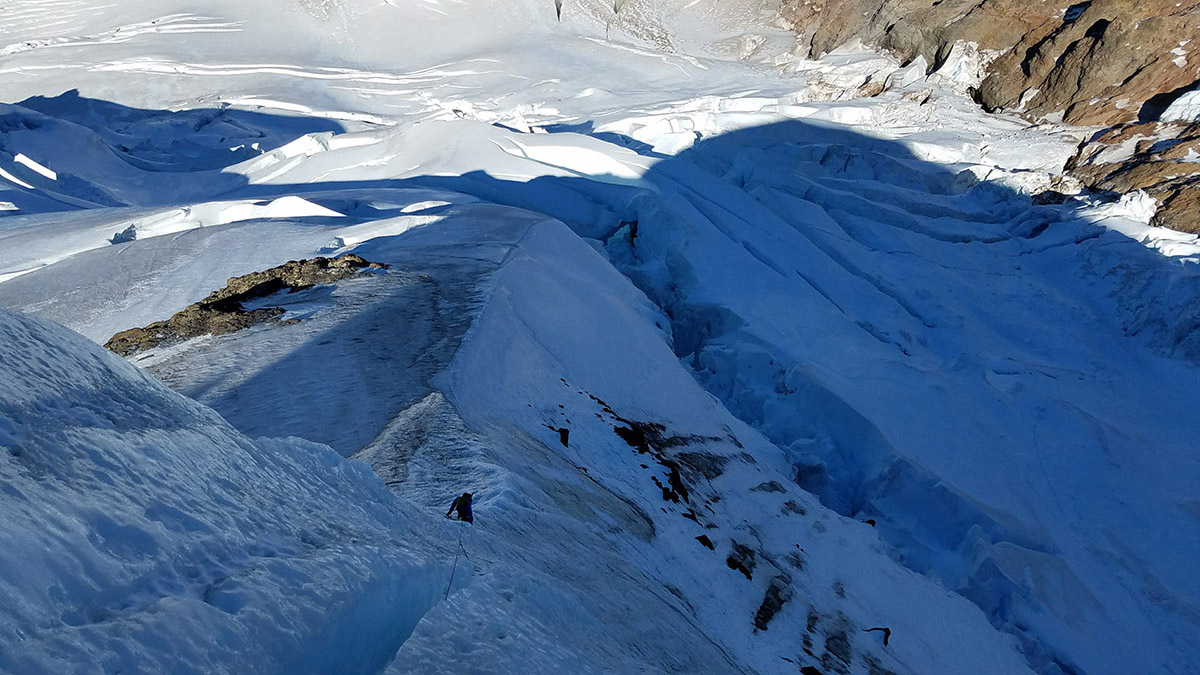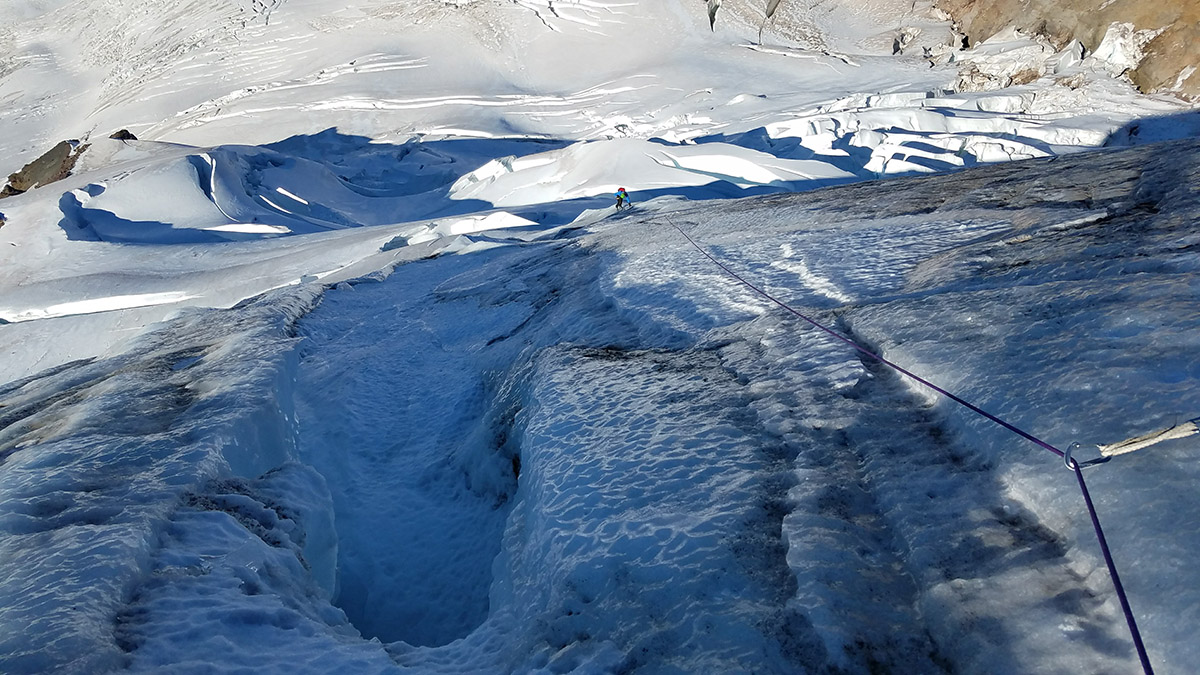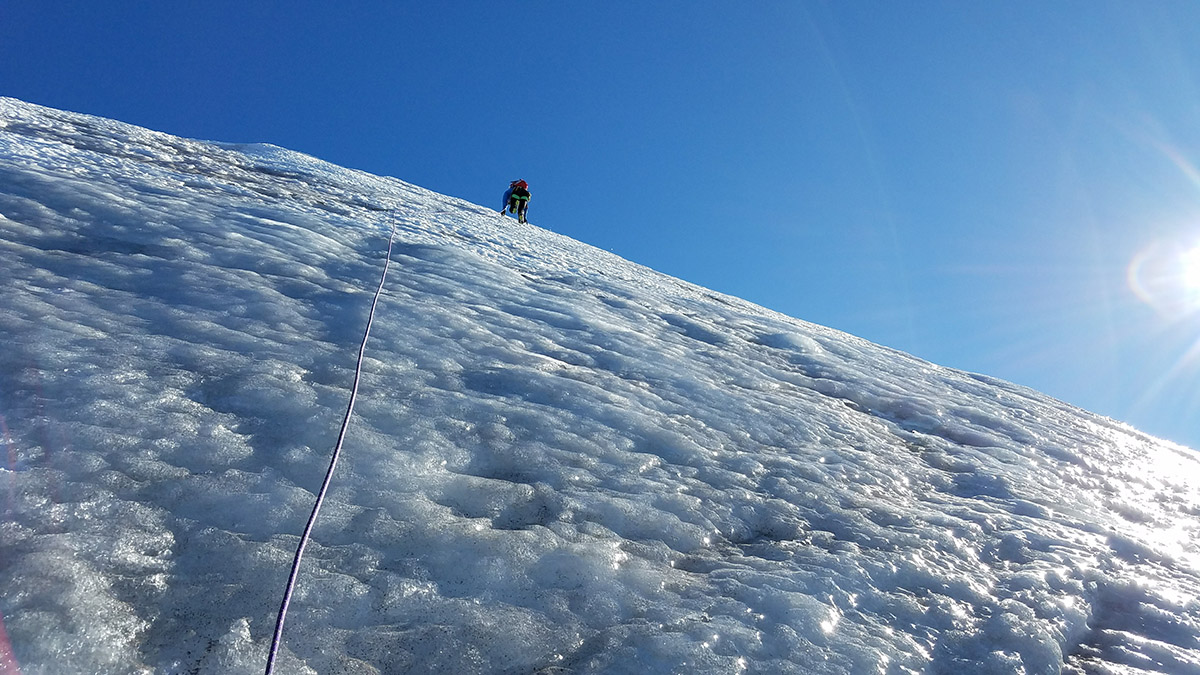Great conditions on the North Ridge of Mt Baker. Myself and another guide (Andrew Powell) approached via the Roosevelt-Coleman divide, crossing the Coleman between 5000'-5400' and then ascending the divide (aim for gaining the divide just above the waterfall) and accessing the glacier at 6500' at the top of the moraine. Minimal route finding up the Coleman-Roosevelt to the toe of the N Ridge; snow on the glacier is hard and with few ice patches.
No issues on the bergschrund crossing to the N Ridge toe (7800'); an easy ramp at the bergschrund gets you onto steep snow, with scree and steep snow above onto the north ridge proper. Lots of quality/solid ice right now starting right at the first belay, then 120+ meters of hard/brittle ice, then steep snow above (picket will penetrate ~40cm of hard/solid snow at the last belay off the ice).
The bergschrund at the summit dome was easily crossed by going high and left at the summit seracs that overlook the north ridge. We went around the summit bergschrund at the farthest left/east point of the bergschrund (nearly to Cockscomb Ridge).
Descent down the Coleman-Deming route was straight forward (with some late afternoon soft snow on the Roman Wall); the Coleman was a little less direct than usual; some navigation around some large crevasses with some tracks ending at broken or sketchy crossings. The lower Coleman headwall has steep and icy; we chose to descend rock bands down left/west and head down the shortest part of the headwall connecting steep hard snow between steep ice bands (not pleasant); going out much further west might be better (less steep).



